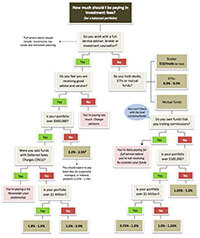How costs undermine investment performance
A breakdown of all the things that can affect returns
Advertisement
A breakdown of all the things that can affect returns
 Would you be OK with investment costs of 5% a year? I can already hear your response: “No bloody way.” Yet, many investors face costs in this neighbourhood because they’re unaware of all the components that eat away at returns. This infographic reveals the key factors that play a role in the often-murky world of investment costs.
These costs range from commissions to advisory fees to the real wild card—our own behaviour (i.e. when and how often we buy and sell). New reporting requirements now in effect (referred to as “CRM2”) give investors with better, albeit incomplete, information on their hard costs and performance. Many investors will receive their first “Summary of Costs” report in early 2017.
The investment media anticipates that this ‘Great Reveal’ will be an eye opener for many Canadians. But while the new reporting requirements are a step in the right direction, investors should be aware that the new reports do not include a potentially large component of their overall costs—namely, product fees (which may also be referred to as investment management fees). We explain the various costs below.
Would you be OK with investment costs of 5% a year? I can already hear your response: “No bloody way.” Yet, many investors face costs in this neighbourhood because they’re unaware of all the components that eat away at returns. This infographic reveals the key factors that play a role in the often-murky world of investment costs.
These costs range from commissions to advisory fees to the real wild card—our own behaviour (i.e. when and how often we buy and sell). New reporting requirements now in effect (referred to as “CRM2”) give investors with better, albeit incomplete, information on their hard costs and performance. Many investors will receive their first “Summary of Costs” report in early 2017.
The investment media anticipates that this ‘Great Reveal’ will be an eye opener for many Canadians. But while the new reporting requirements are a step in the right direction, investors should be aware that the new reports do not include a potentially large component of their overall costs—namely, product fees (which may also be referred to as investment management fees). We explain the various costs below.

How much should you be paying in fees? Check out the fee tree |
Share this article Share on Facebook Share on Twitter Share on Linkedin Share on Reddit Share on Email